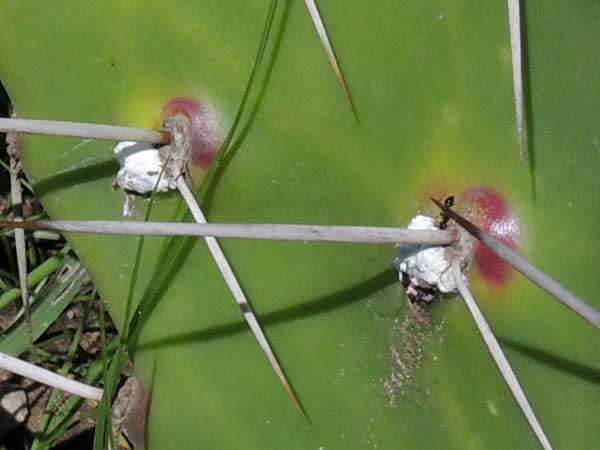Cochineal Scale
Dactylopius

Observed at Mweiga, Nyeri County, Kenya. Dec. 2015. Host is Opuntia stricta, exotic prickly pear cactus.
From Wikipedia: A primarily sessile parasite native to tropical and subtropical South America as well as Mexico and Arizona, this insect lives on cacti in the genus Opuntia, feeding on plant moisture and nutrients. These insects are found on the pads of prickly pear cacti, then are brushed off and dried. The insect produces carminic acid that deters predation by other insects. Carminic acid, typically 17-24% of dried insects' weight, can be extracted from the body and eggs, then mixed with aluminium or calcium salts to make carmine dye, also known as cochineal. Today, carmine is primarily used as a colorant in food and in lipstick. The carmine dye was used in Central America in the 15th century for coloring fabrics and became an important export good during the colonial period. After synthetic pigments and dyes such as alizarin were invented in the late 19th century, natural-dye production gradually diminished. Health fears over artificial food additives, however, have renewed the popularity of cochineal dyes, and the increased demand has made cultivation of the insect profitable again, with Peru being the largest exporter. Some towns in the Mexican state of Oaxaca are still working in handmade textiles using this cochineal.
Prickly-pear cactus are not native to Africa and in many places they are classified as an invasive, destructive weed. Various insects including cochineal have been introduced in an effort to achieve biological control including in Kenya. Cochineal might also have been introduced long ago in an effort to produce the economically valuable dye?